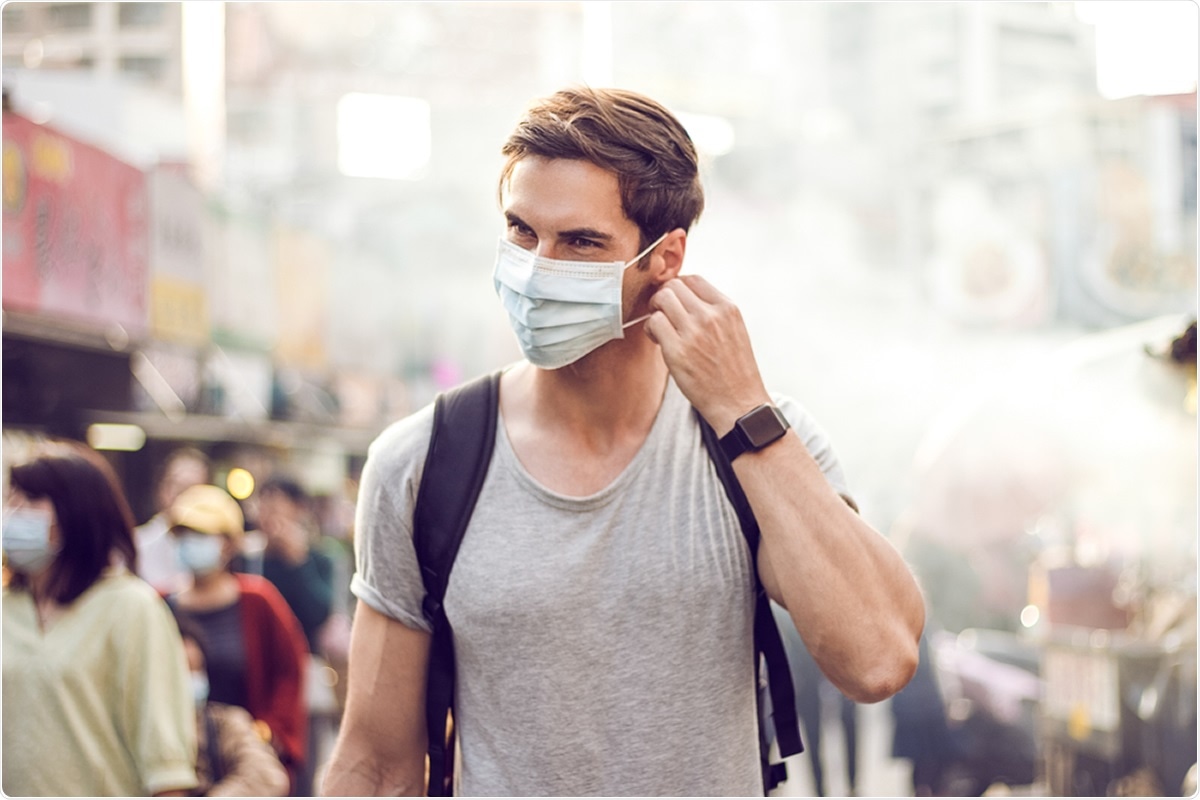Researchers in Germany and China have conducted a study analyzing the efficacy of face masks in mitigating the spread of severe acute respiratory syndrome coronavirus 2 (SARS-CoV-2) – the agent that causes coronavirus disease 2019 (COVID-19).
Hang Su from the Max Planck Institute for Chemistry in Mainz and colleagues showed that variations in the efficacy of mask-wearing can be accounted for by differing levels of SARS-CoV-2 abundance and can be related to the population-average infection probability.
The team found that the abundance of the virus is low in most environments, meaning surgical masks would be effective at preventing transmission.
However, in potentially virus-rich indoor environments such as hospitals and medical centers, more advanced masks and other protective equipment would be needed to prevent transmission, says Su and colleagues.
Writing in the journal Science*, the researchers also say that masks are particularly effective when used in combination with other preventive measures such as ventilation and social distancing.

The efficacy of face masks is still under debate
Airborne transmission is one of the main routes by which SARS-CoV-2 is spread, and face mask-wearing has been widely advocated during the COVID-19 pandemic.
However, the effectiveness of mask-wearing is a topic of debate since surgical masks, for example, have been shown to exhibit variable penetration rates, ranging from around 30% to 70%.
In addition, randomized clinical trials have generated inconsistent or inconclusive results, with some reporting only marginal benefits of mask use. However, observational studies have shown that in settings where a high proportion of people wear masks, transmission has been better controlled.
What did the researchers do?
Su and colleagues developed a quantitative model of airborne virus exposure, which they used to determine the efficacy of facemasks.
The team showed that the efficacy of face masks varies depending on the abundance of airborne virus.
Based on measurements of SARS-CoV-2 in air samples and population-level infection probabilities, the researchers found that the virus abundance in most environments is low enough for masks to be effective at reducing airborne transmission.
Calculating the effect that mask-wearing has on the infection probability
Using a single-hit model of infection, Su and colleagues found that in a virus-rich setting, the infection probability is not sensitive to changes in the total number of viruses and mask-wearing may not be sufficient to prevent infection.
In a virus-limited environment, however, the infection probability is highly sensitive to variation in the total number of viruses and is substantially reduced by mask-wearing.
“Thus, we need to determine the regime of airborne virus abundance to understand mask efficacy,” say the researchers.
Next, the team compared the efficacies of surgical masks and N95 masks between virus-limited and virus-rich conditions.
This revealed that under virus-limited conditions, the masks reduced the infection probability by as much as their filter efficiency but that they were much less effective in the virus-rich regime.
“Accordingly, experimental investigations may find low mask efficacies when they are performed under virus-rich conditions,” writes Su and colleagues.
The findings also suggest that more advanced masks and other protective equipment are needed in potentially virus-rich indoor environments such as medical centers and hospitals.
Synergistic effects of combining mask-wearing with other measures
The team says the increasing efficacy of mask use under conditions of low virus abundance points to the potential synergistic effects of combining masks with other measures designed to reduce airborne abundances, such as ventilation and social distancing.
The researchers found that the use of ventilation changed an environment from virus-rich to virus-limited, a finding that has significant implications for medical centers with relatively high SARS-CoV-2 abundance. Furthermore, the use of ventilation increased the efficacy of face masks in virus-rich environments and the efficacy of social distancing.
“The more measures are used, the more effective each measure will be in containing the virus transmission,” says Su and colleagues.
The researchers say adequate ventilation and social distancing will reduce ambient virus concentrations and increase the effectiveness of face masks in containing transmission.
“Moreover, high compliance and correct use of masks are important to ensure the effectiveness of universal masking,” concludes the team.
- Su H, et al. Face masks effectively limit the probability of SARS-CoV-2 transmission. Science, 2021. DOI: 10.1126/science.abg6296, https://science.sciencemag.org/content/early/2021/05/19/science.abg6296
Posted in: Child Health News | Men's Health News | Medical Research News | Women's Health News | Disease/Infection News
Tags: Coronavirus, Coronavirus Disease COVID-19, Efficacy, Pandemic, Respiratory, SARS, SARS-CoV-2, Severe Acute Respiratory, Severe Acute Respiratory Syndrome, Syndrome, Virus

Written by
Sally Robertson
Sally first developed an interest in medical communications when she took on the role of Journal Development Editor for BioMed Central (BMC), after having graduated with a degree in biomedical science from Greenwich University.
Source: Read Full Article
